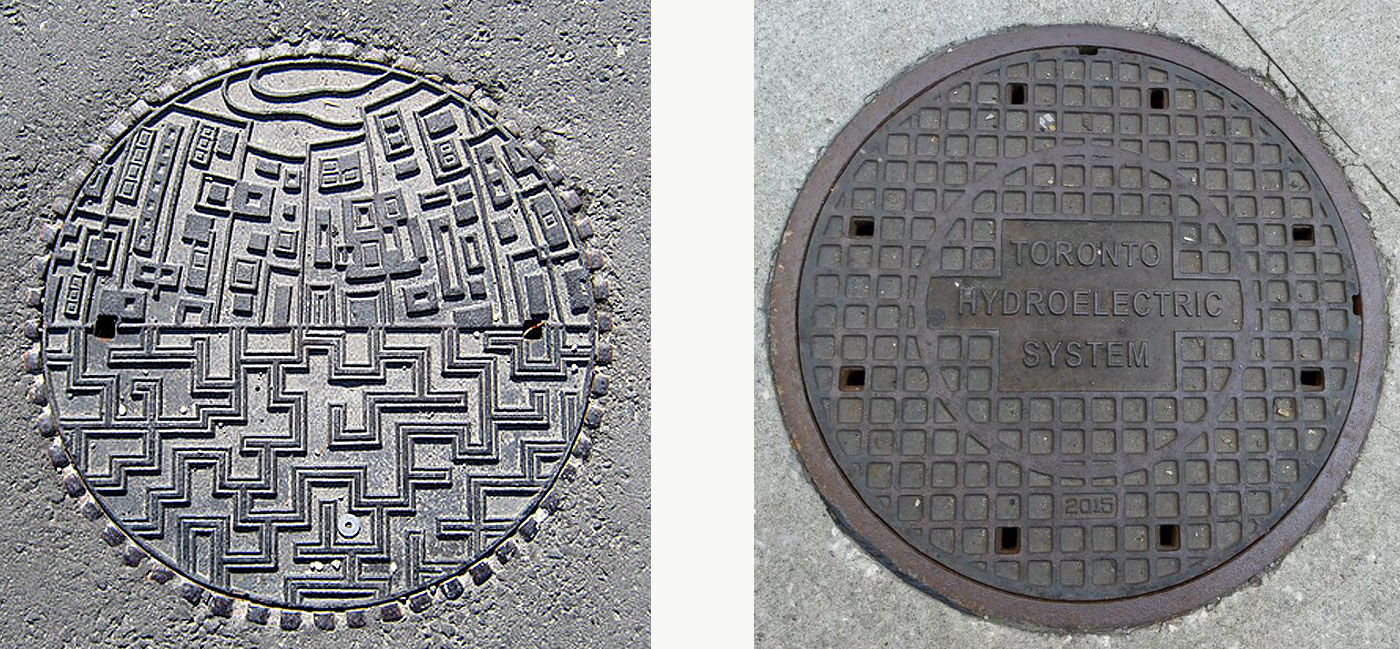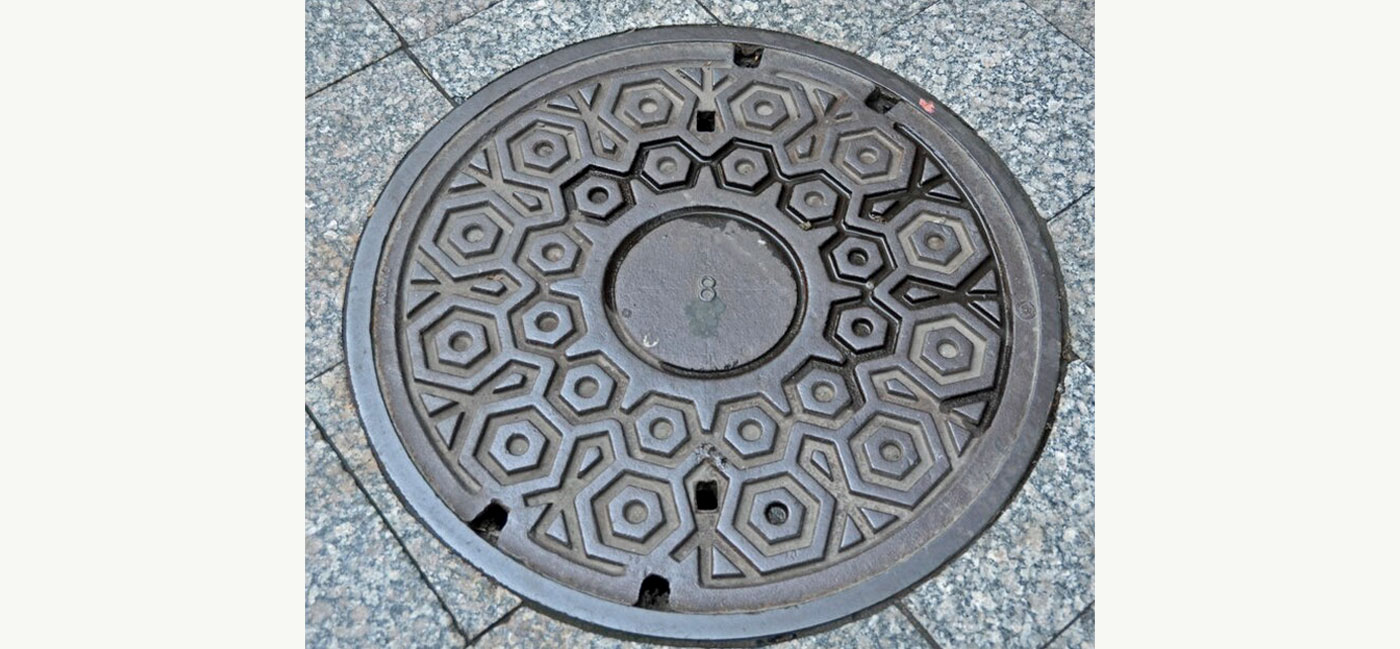
Curious Covers
Toronto, ONGet your head out of the clouds, take a look at the ground beneath your feet and stop to admire the often ignored manhole cover. These cast-iron emblems of infrastructure contain a range of embossed patterns and meaning. Some patterns are playful, others highly geometric and robust — yet all seem to celebrate and embody a sense of civic optimism for infrastructure.
In Toronto, you can track certain styles of manhole covers by the periods in which larger infrastructural projects were undertaken. For example, covers with the ubiquitous waffle patterns and perforations were designed in 1910 when major public works projects such as the construction of sewer tunnels and the Bloor viaduct bridge took place. This particular grey-iron gridded cover was designed by well known local photographer, Arthur S. Goss. Goss is best known for his striking photos that evocatively documented Toronto from 1910 – 1940, but before that time he was a draftsman with the city where he designed the cover. While we don’t know the origins of others scattered through Toronto, we imagine each might have a particular story to tell about its context or creator that provides insight into the rich history of this city.
The overlay of aesthetic and functional qualities makes for an important urban artifact. It is a means by which to mark and embody a period of urban optimism, growth and change. We value multiple scales of design and take particular delight in small scale moments, such as the manhole cover, which might at first seem banal but upon closer inspection offers important insights into history, memory and a sense of place.




